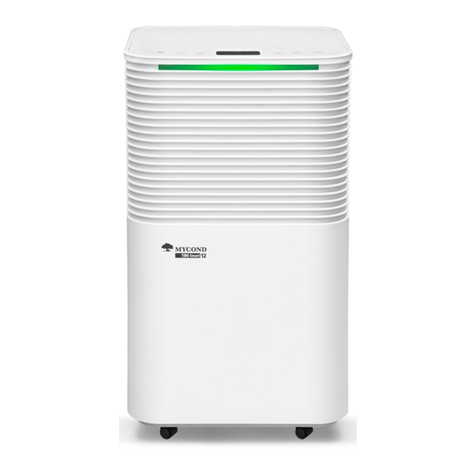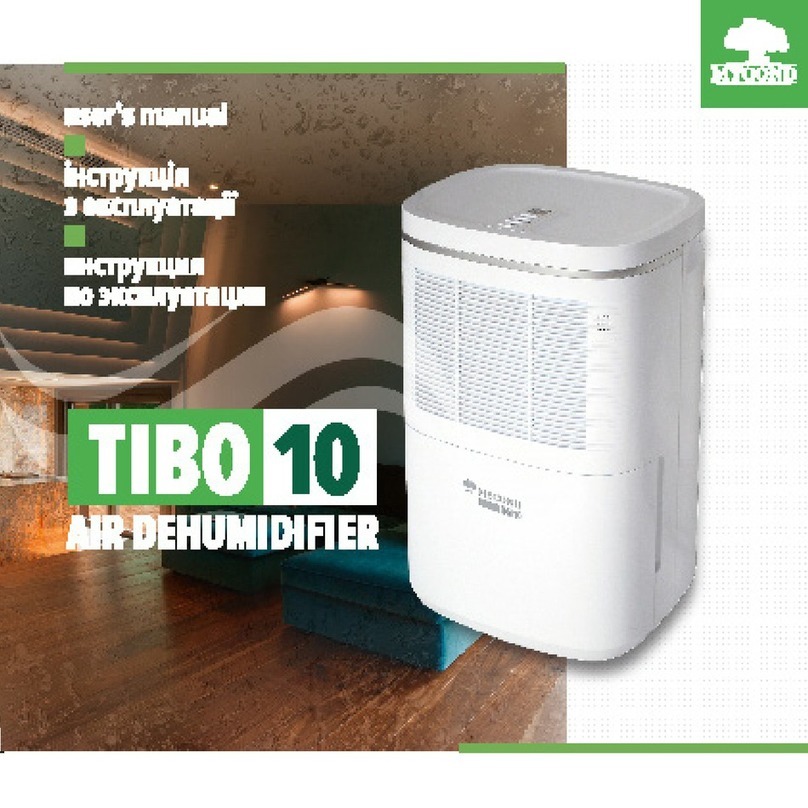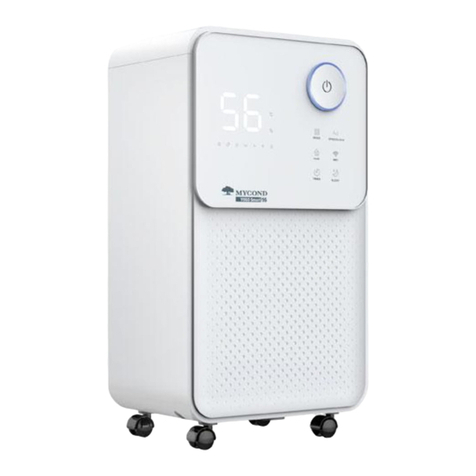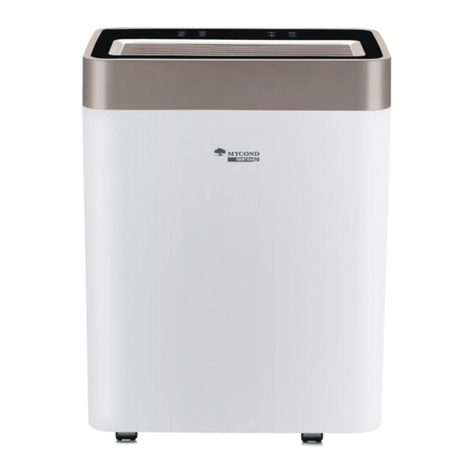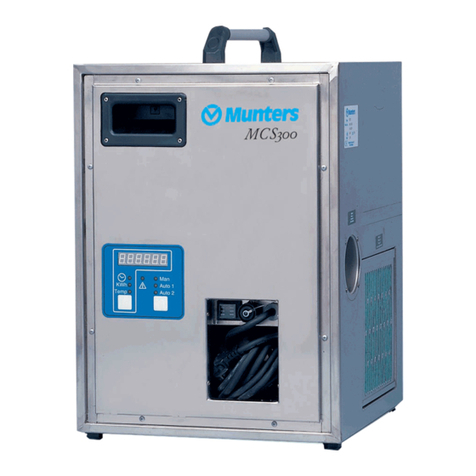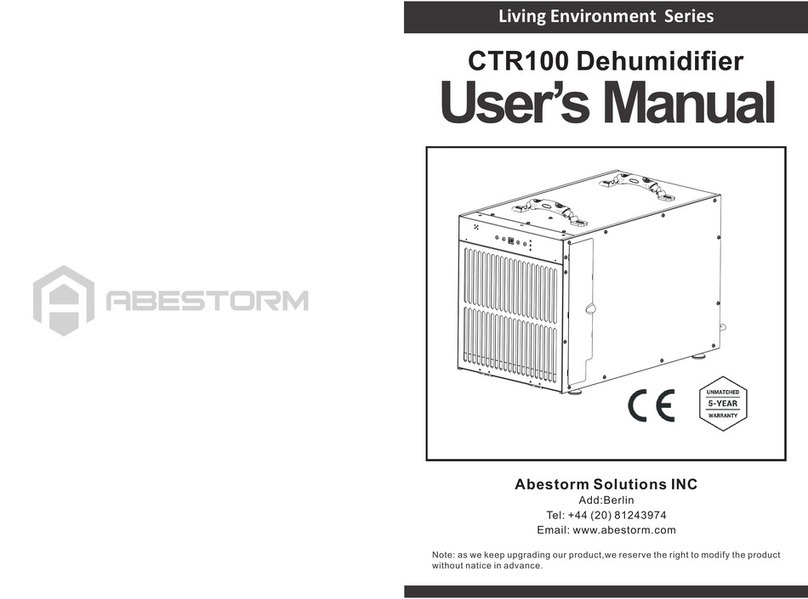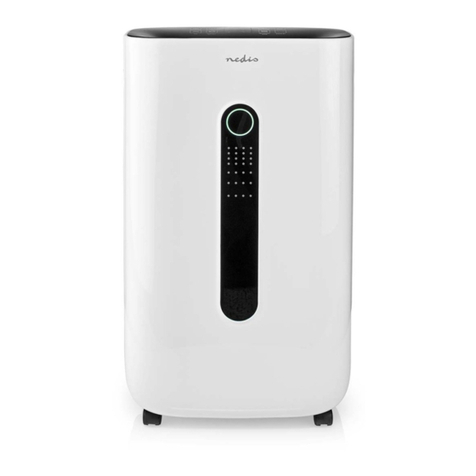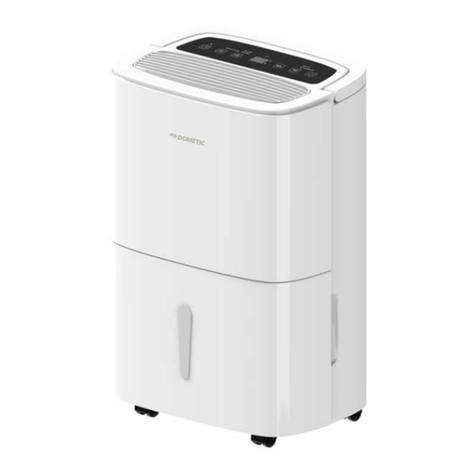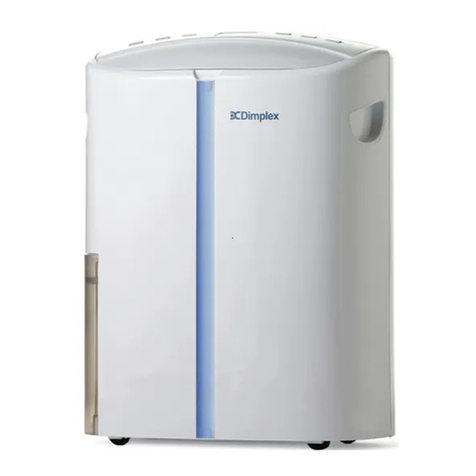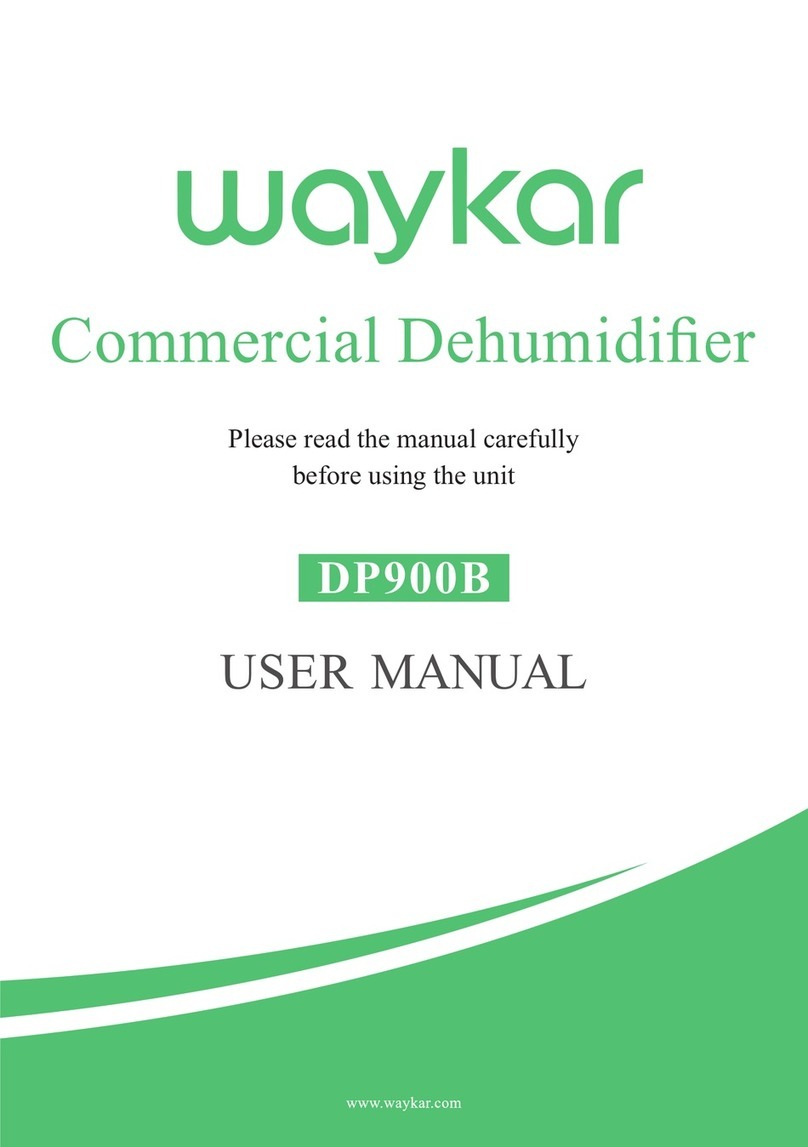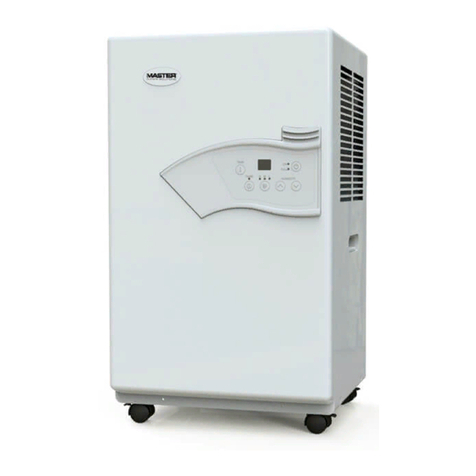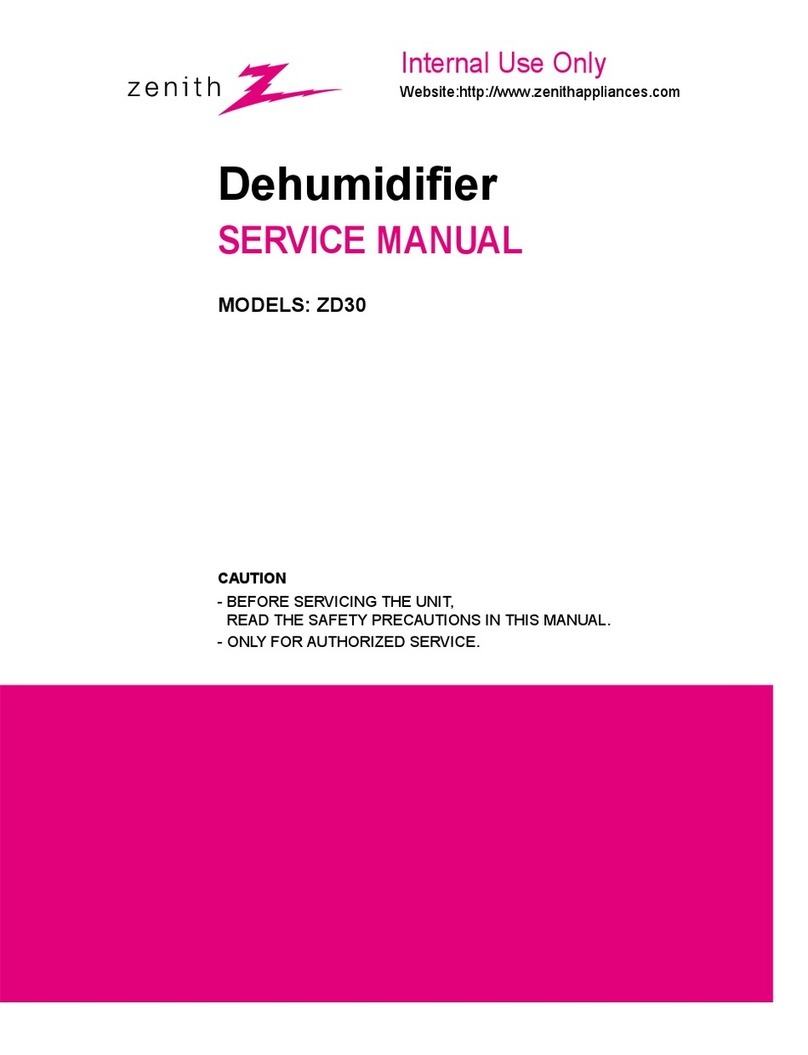Mycond ROOMER Eco 25 User manual

user's manual
■
посібник
користувача
■
руководство
пользователя
ROOMER Eco 25
AIR DEHUMIDIFIER


AIR DEHUMIDIFIER
USER’S MANUAL
3
ROOMER Eco 25

eng 4
USER’S MANUAL
PLEASE KEEP THIS MANUAL FOR FURTHER REFERENCE!
Thank you for selecting our super quality dehumidifier. Please be sure to read this manual
carefully before using it. If you have any questions, please contact the professional service for
help. Keep the manual for further reference.
The dehumidifier will remove excess moisture from the air, creating a comfortable
environment for your home and oce. Its compact design allows you to easily move it to any
room.

5
CONTENTS
PRECAUTIONS ■■■■■■■■■■■■■■■■■■■■■■■■■■■■■■■■■■■■■■■■■■■■■■■■■■ 6
SPECIFICATIONS ■■■■■■■■■■■■■■■■■■■■■■■■■■■■■■■■■■■■■■■■■■■■■■■ 13
APPEARANCE■■■■■■■■■■■■■■■■■■■■■■■■■■■■■■■■■■■■■■■■■■■■■■■■■■ 14
CONTROL PANEL ■■■■■■■■■■■■■■■■■■■■■■■■■■■■■■■■■■■■■■■■■■■■■■■ 16
OPERATION ■■■■■■■■■■■■■■■■■■■■■■■■■■■■■■■■■■■■■■■■■■■■■■■■■■■■17
MAINTENANCE■■■■■■■■■■■■■■■■■■■■■■■■■■■■■■■■■■■■■■■■■■■■■■■■■ 19
TROUBLESHOOTING ■■■■■■■■■■■■■■■■■■■■■■■■■■■■■■■■■■■■■■■■■■■■■ 22
DECOMMISSIONING ■■■■■■■■■■■■■■■■■■■■■■■■■■■■■■■■■■■■■■■■■■■■■ 24

eng 6
PRECAUTIONS
Read the following notices carefully before operating this dehumidifier.
The warnings and notices must be observed effectively to ensure the safety of the operation.
1. This appliance is intended to be used by expert or trained users in shops, in light industry and on farms, or for
commercial use by lay persons.
2. This appliance can be used by children aged from 8 years and above and persons with reduced physical, sensory or
mental capabilities or lack of experience and knowledge if they have been given supervision or instruction concerning
use of the appliance in a safe way and understand the hazards involved. Children shall not play with the appliance.
Cleaning and user maintenance shall not be made by children without supervision.
3. The unit is designed only for use with R-290(propane) gas as the designated refrigerant.
4. The refrigerant loop is sealed. Only a qualified technician should attempt to service!
5. Do not discharge the refrigerant into the atmosphere.
6. R-290 (propane) is flammable and heavier than air.
7. It collects first in low areas but can be circulated by the fans.
8. If propane gas is present or even suspected, do not allow untrained personnel to attempt to find the cause.
9. The propane gas used in the unit has no odor.
10. The lack of smell does not indicate a lack of escaped gas.
11. If a leak is detected, immediately evacuate all persons from the store, ventilate the room and contact the local fire
department to advise them that a propane leak has occurred.
12. Do not let any persons back into the store until the qualified service technician has arrived and that technician advises
that it is safe to return to the store.
13. No open flames, cigarettes or other possible sources of ignition should be used inside or in the vicinity of the units.
14. Component parts are designed for propane and non-incentive and non-sparking. Component parts shall only be
replaced with identical repair parts.
15. If the supply cord is damaged, it must be replaced by the manufacturer, its service agent or similarly qualified persons
in order to avoid a hazard.
16. The A-weighted sound pressure level is below 45dB.
17. The appliance shall be disconnected from its power source during service.

7
18. Always operate the unit from a power source of equal voltage, frequency and rating as indicated on the product
identification plate.
19. Do not leave the unit running unattended.
20. Do not touch the air inlet or the aluminum fins of the unit.
21. Do not operate the unit if it is dropped, damaged or showing signs of product malfunction. Do not operate the product with
damaged plug or cord. If it is not working properly, contact a qualified electrician or service centre for examination and
repair, never try to dismantle it by yourself (user).
22. The unit shall be installed in accordance with national wiring regulations.
23. Do not use means to accelerate the defrosting process or to clean, other than those recommended by the manufacture.
24. The appliance shall be stored in a room without continuously operation sources (for example: open flames, an operating
gas appliance or an operating electric heater).
25. The appliance shall be stored so as to prevent mechanical damage from occurring.
26. Do not piece or burn, even after use.
27. Be aware that refrigerants may not contain an odour.
28. Pipe-work shall be protected from physical damage and shall not be installed in an unventilated space, if that space is
smaller than 4m².
29. Compliance with national gas regulations shall be observed.
30. Keep any required ventilation openings clear of obstruction.
31. The appliance shall be stored in a well-ventilated area where the room size corresponds to the room area as specified for
operation.
PRECAUTIONS

eng 8
Any person who is involved with working on or breaking into a refrigerant circuit should hold a current valid certificate from
an industry-accredited assessment authority, which authorizes their competence to handle refrigerants safely in accordance
with an industry, recognized assessment specification.
Servicing shall only be performed as recommended by the equipment manufacturer. Maintenance and repair requiring
the assistance of other skilled personnel shall be carried out under the supervision of the person competent in the use of
flammable refrigerants.
If you don’t understand something or need help, please contact the dealer services.
SAFETY PRECAUTIONS ON SERVICING
Please follow these warnings when to undertake the following when servicing a dehumidifier with R290.
Checks to the area
Prior to beginning work on systems containing flammable refrigerants, safety checks are necessary to ensure that the risk
of ignition is minimized. For repair to the refrigerating system, the following precautions shall be complied with prior to
conducting work on the system.
Work procedure
Work shall be undertaken under a controlled procedure so as to minimize the risk of a flammable gas or vapor being present
while the work is being performed.
General work area
All maintenance staff and others working in the local area shall be instructed on the nature of work being carried out. Work
in confined spaces shall be avoided. The area around the workspace shall be sectioned off. Ensure that the conditions within
the area have been made safe by control of flammable material.
PRECAUTIONS

9
Checking for presence of refrigerant
The area shall be checked with an appropriate refrigerant detector prior to and during work, to ensure the technician is aware
of potentially flammable atmospheres. Ensure that the leak detection equipment being used is suitable for use with flammable
refrigerants, i.e. no sparking, adequately sealed or intrinsically safe.
Presence of fire extinguisher
If any hot work is to be conducted on the refrigeration equipment or any associated parts, appropriate fire extinguishing
equipment shall be available to hand. Have a dry powder or CO2fire extinguisher adjacent to the charging area.
No ignition sources
No person carrying out work in relation to a refrigeration system which involves exposing any pipe work that contains or
has contained flammable refrigerant shall use any sources of ignition in such a manner that it may lead to the risk of fire or
explosion. All possible ignition sources, including cigarette smoking, should be kept sufficiently far away from the site of
installation, repairing, removing and disposal, during which flammable refrigerant can possibly be released to the surrounding
space. Prior to work taking place, the area around the equipment is to be surveyed to make sure that there are no flammable
hazards or ignition risks. “No Smoking” signs shall be displayed.
Ventilated area
Ensure that the area is in the open or that it is adequately ventilated before breaking into the system or conducting any hot
work. A degree of ventilation shall continue during the period that the work is carried out. The ventilation should safely disperse
any released refrigerant and preferably expel it externally into the atmosphere.
Checks to the refrigeration equipment
Where electrical components are being changed, they shall be fit for the purpose and to the correct specification. At all
times the manufacturer’s maintenance and service guidelines shall be followed. If in doubt consult the manufacturer’s
technical department for assistance.
PRECAUTIONS

eng 10
The following checks shall be applied to installations using flammable refrigerants:
The charge size is in accordance with the room size within which the refrigerant containing parts are installed;
The ventilation machinery and outlets are operating adequately and are not obstructed;
If an indirect refrigerating circuit is being used, the secondary circuit shall be checked for the presence of refrigerant;
Marking to the equipment continues to be visible and legible. Markings and signs that are illegible shall be corrected;
Refrigeration pipe or components are installed in a position where they are unlikely to be exposed to any substance which
may corrode refrigerant containing components, unless the components are constructed of materials which are inherently
resistant to being corroded or are suitably protected against being so corroded.
Checks to electrical devices
Repair and maintenance to electrical components shall include initial safety checks and component inspection procedures.
If a fault exists that could compromise safety, then no electrical supply shall be connected to the circuit until it is
satisfactorily dealt with. If the fault cannot be corrected immediately but it is necessary to continue operation, an adequate
temporary solution shall be used. This shall be reported to the owner of the equipment so all parties are advised.
Initial safety checks shall include:
those capacitors are discharged: this shall be done in a safe manner to avoid possibility of sparking;
that there no live electrical components and wiring are exposed while charging, recovering or purging the system;
that there is continuity of earth bonding.
PRECAUTIONS

11
PRECAUTIONS
OPERATING THE DEVICE SAFELY
Check the device after unpacking for any damages or scratches on it.
Operate this unit in an ambient temperature from 5°C to 35°C.
Do not use in the outdoors. This dehumidifier is intended for indoor residential applications only.
Do not operate in close proximity to walls, curtains, or other objects that may block inlet and outlet.
Keep the air inlet and outlet free of obstacles.
Adjusting the wind deflector in the upward direction prior to start up.
If tipped more than 45°, allow the unit to set upright for at least 24 hours before start up.
Keep doors and windows close for better energy saving.
Do not operate or store the unit in direct sunlight or rain.
It is normal for air outlet to feel warm to touch after continuous operation on hot days.
Empty the water tank before moving the device.
Make sure the Water tank is correctly fitted otherwise the unit will not operate properly.
The dehumidifier starts up in the mode selected when the unit was last used.
The dehumidifier starts dehumidifying if the room humidity is 3% higher than the selected humidity.
There is a protective 3-minutes time delay of the compressor. Wait 3 minutes for the dehumidifier to resume
dehumidification.

eng 12
LOCATION
1. Place the unit on a firm, level surface in an area with at least 30cm of free space around it to allow for proper air
circulation.
2. Never install the unit where it could be subject to:
Heat sources such as radiators, heat registers, stoves or other products that products that produce heat.
In an area where oil or water may be splashed
Direct sunlight
Mechanical vibration or shock
Excessive dust
Lack of ventilation, such as cabinet or bookcase
Uneven surface
3. Install the unit in rooms which exceed 4 m².
4. Do not install the unit in a place where inflammable gas may leak
PRECAUTIONS
30 сm
30 сm

13
Home Dehumidifier ROOMER ECO 25
Power Supply AC220-240V/50Hz
Power Consumption 320W (27°C, RH60%)
370W (30°C, RH80%)
Rated Current 1.75A (27°C, RH60%)
2.0A (30°C, RH80%)
Dehumidifying Capacity 25L/Day (30°C, RH80%)
13L/Day (27°C, RH60%)
Water Tank Capacity 4.0L
Noise Level ≤45dB(A)
Refrigerant/Charge R290/70g
Temperature scope of application 5°C – 35°C
Suction Side Pressure 0.7MPa
Discharge Side Pressure 3.2MPa
Heat exchanger maximum allowable pressure 3.2MPa
Airflow 180 m³/hr
Dimension 350×235×578 mm
Net weight 14.5kg
Note: Specifications subject to change without notice.
SPECIFICATIONS

eng 14
Control panel
Front shell
Air outlet
Castors
APPEARANCE

15
Air Filter
Continuous drainage
Top cover
Water tank
APPEARANCE

eng 16
CONTROL PANEL

17
OPERATION
POWER BUTTON
In the standby state, press the power button to turn on, the operation indicator lights up and the default fan speed is high,
and the default humidity is 60%. In the power-on state, press the power button to turn o, the running indicator light goes
o and the compressor stops immediately, and then the fan shut down after 30 seconds delay.
1. POWER button Press to switch the machine on or o.
2. Mode Button Press to choose Auto,Continuous and Sleep mode.
3. Speed button Press to select fan speed between high and low.
4. ADD Increasing the desired humidity, temperature and timer setting.
5. Digital Display Displays humidity value, Timer setting or Temperature.
6. MINUS Decreasing the desired temperature, humidity and timer setting.
7. Timer button Sets a time for the unit to automatically start or stop.
8. Lock button Hold this button to turn child lock function on or o.

eng 18
OPERATION
MODE BUTTON
Press the mode key to switch between automatic ,Continuous and Sleep mode.
Automatic mode: adjustable humidity, adjustable fan speed.
Continuous mode: press the power button to turn on, the operation indicator lights up and the default fan speed is
high, In this mode, the compressor will continue to work without being aected by indoor humidity and the fan speed
can’t be adjustable.
Sleep mode: Touch the sleep button and the button light will be on to activate the sleep function.In sleep mode, the
wind speed is low and the humidity is adjustable.
SPEED
High wind - low wind cycle, press button once to switch and then the corresponding indicator lights up. In continuously
drying mode, sleep mode and defrosting period, the wind speed can not be changed.
TIMER BUTTON
Press the timer button to set the 0-24 hour timing function. The interval is 1 hour. Each time you press this button, the
value increased 1 hours and then the corresponding timing value is displayed on the screen. The setting value is “00”
to cancel the timer function. The indicator turns out. After the timer is set and completed, the timer LED is on during the
timing period. After the timing is over, the timer LED turns o automatically.
In the running state, set the time to turn o the machine; in the standby state, set the time to turn on the machine.
CHILD LOCK
Long press the wind speed button for 3 seconds to turn on/o the child-lock function.

19
MAINTENANCE
DRAINAGE
There are two ways of removal collected water produced by the unit.
1. Manual draining: Empty water tank by manual.
2. Continuous draining: Use gravity to drain condensate water by attaching a drain hose.
EMPTYING THE WATER TANK
The water tank built in unit will fill up and shut the unit down once it is full. It will run again once you empty the water tank
and installed properly.
When the tank is full, The unit will make a buzzing sound, and the “Water Full” light will turn on.
Press the POWER button to turn o the unit.
Pull on the water tank and simply slide out of the body of the dehumidifier.
Empty the water into an area with a drain or outside.
Clean the inside of the tank as well as the outside.
Replace the empty tank back into the unit.
Press the POWER button to resume operating.
If the Water Full light does not extinguish, check that the float is correctly in place.

eng 20
MAINTENANCE
CONTINUOUS DRAINING
For continuous operation or unattended dehumidification, please connect the attached drain hose to the unit.
Condensate water can be automatically flow into a bucket or drain by gravity.
1. Set the unit in a horizontal surface and stable position.
2. Switch o the unit before operating.
3. Remove the plug of the water outlet opening, and keep it in safe area.
4. Securely and properly connect the drain hose and make sure it is not kinked and clear of obstruction.
5. Place the outlet of hose over a drain or bucket and ensure that water could freely flow out of the unit.
6. Do not submerge the end of hose into water; otherwise it can cause "Air Lock" in the hose.
To avoid water spillage:
1. As the negative pressure of condensate drain pan is large, tilt the drain hose downward toward the floor. It is
appropriate that the degree of inclination should exceed 20 degrees.
2. Straighten the hose to avoid a trap existing in the hose.
Remove the plug of the water
outlet opening
Connect the drain
hose
Table of contents
Languages:
Other Mycond Dehumidifier manuals

Mycond
Mycond ROOMER 12 User manual
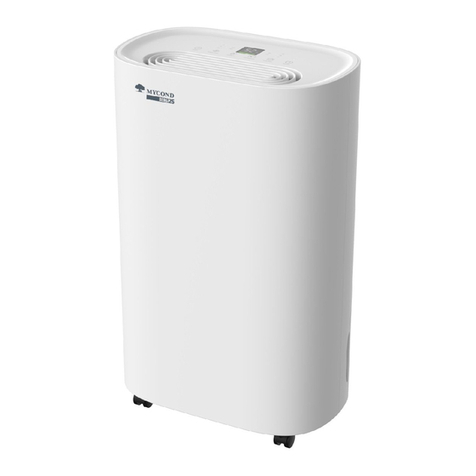
Mycond
Mycond BERG 25 User manual
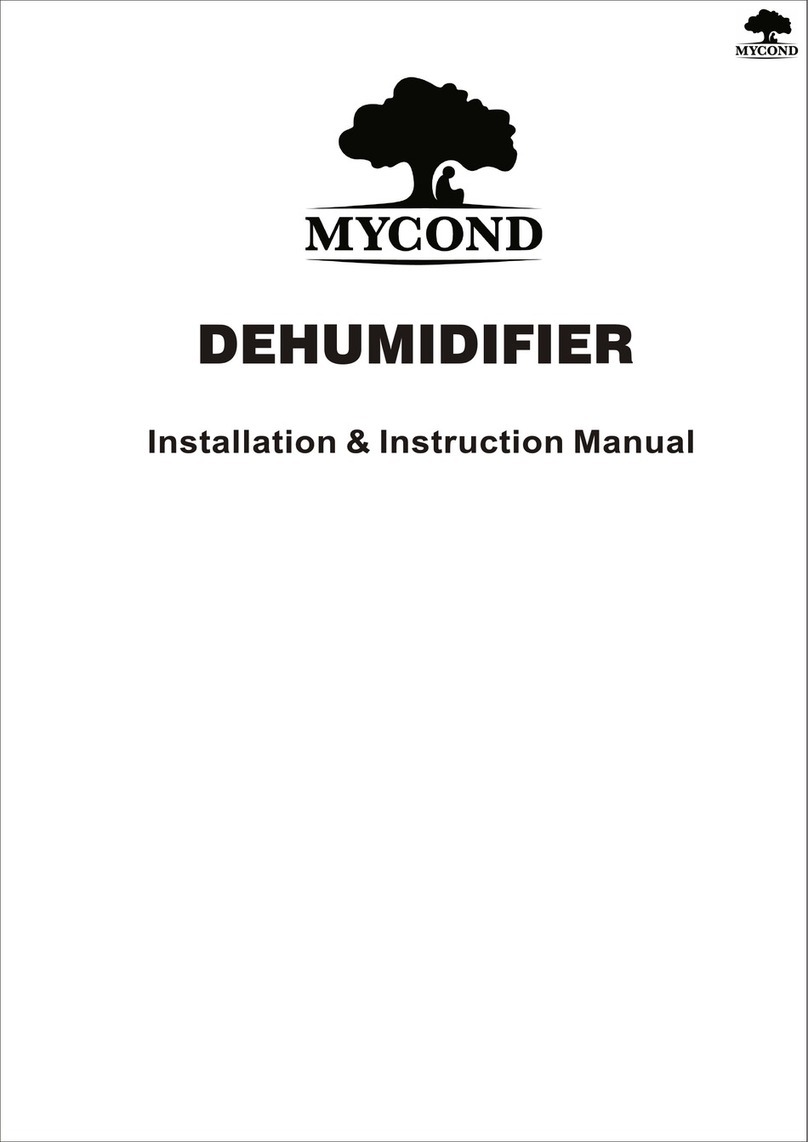
Mycond
Mycond ABS 7A Service manual
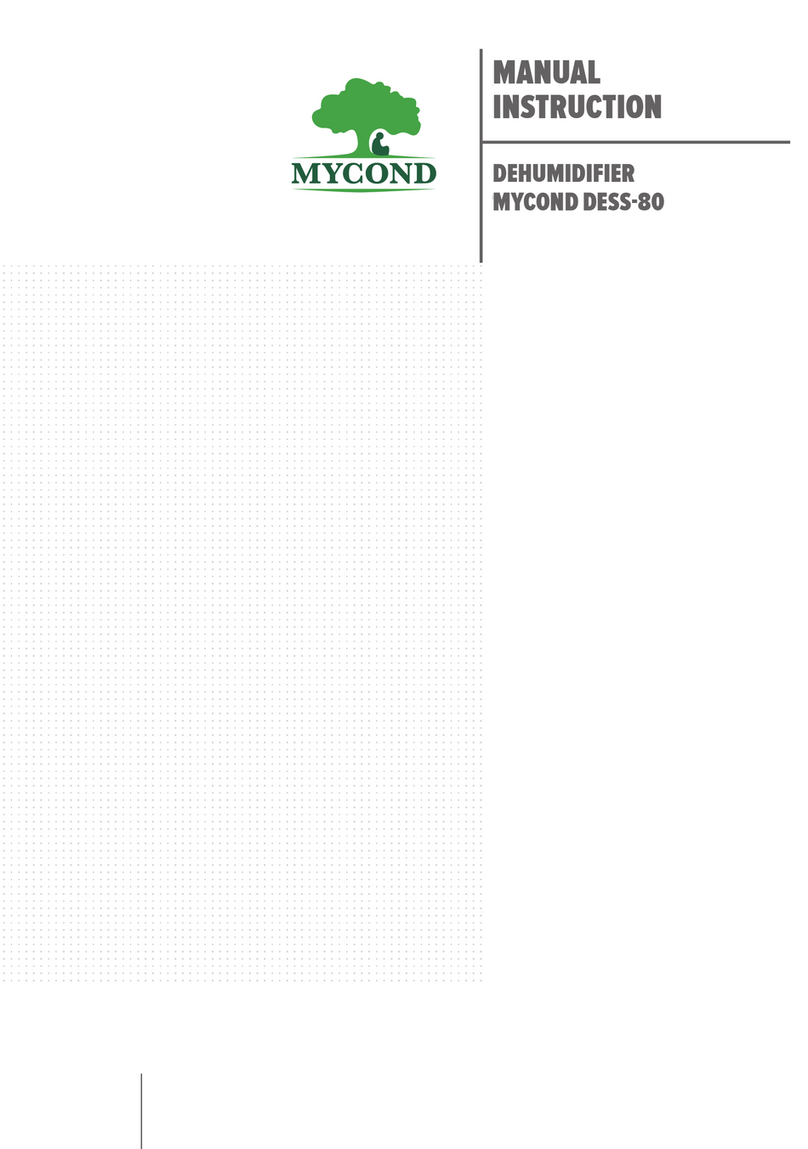
Mycond
Mycond DESS-80 User manual
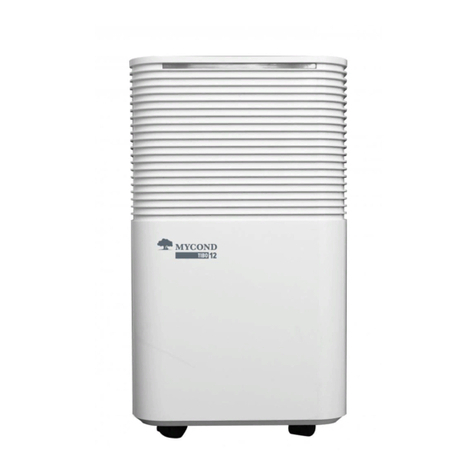
Mycond
Mycond TIBO 12 User manual

Mycond
Mycond ROOMER Smart 25 User manual
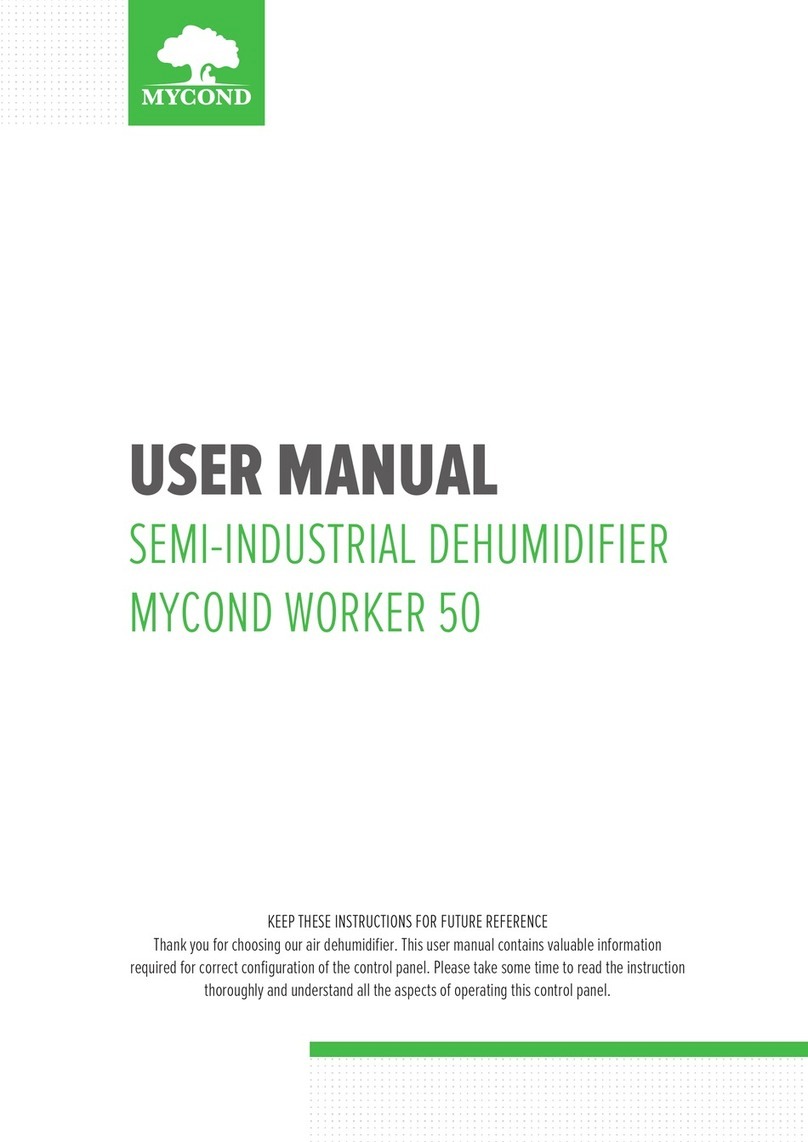
Mycond
Mycond WORKER 50 User manual
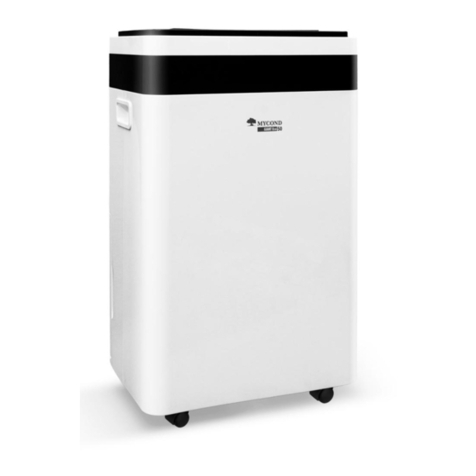
Mycond
Mycond GIANT Eco 50 User manual
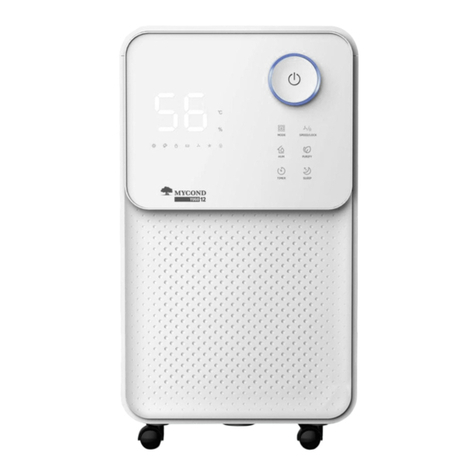
Mycond
Mycond YUGO 12 User manual
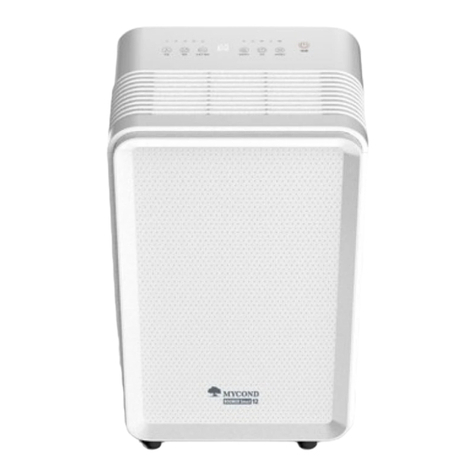
Mycond
Mycond ROOMER Smart 12 User manual
Popular Dehumidifier manuals by other brands
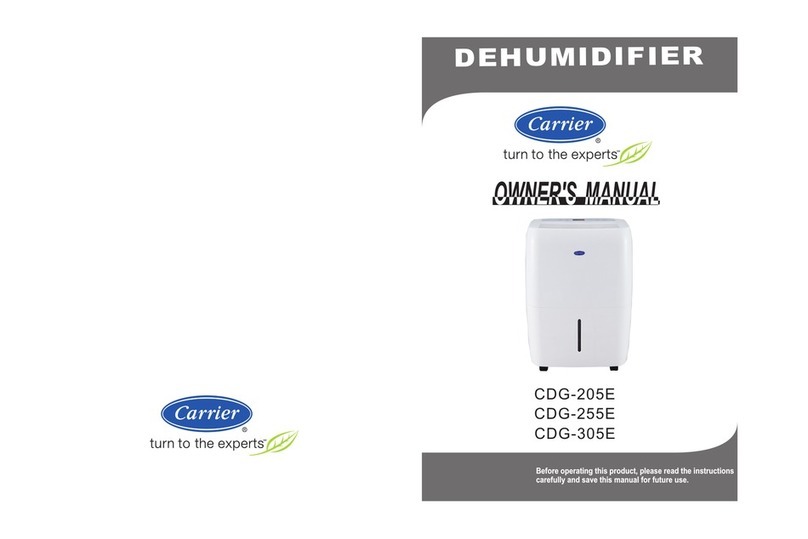
Carrier
Carrier CDG-205E owner's manual
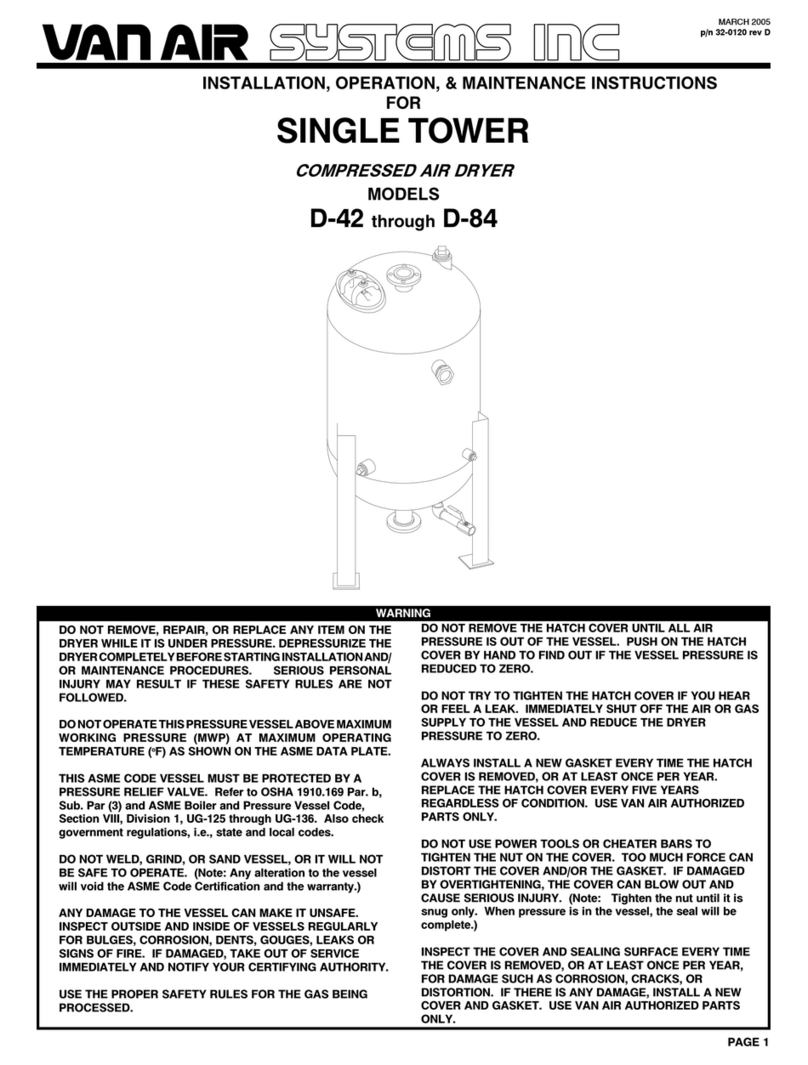
Van Air Systems
Van Air Systems D-42 Installation, operation & maintenance instructions

Legend Brands
Legend Brands Dri-Eaz LGR 2800i owner's manual

El-Björn
El-Björn A 60 BT instruction manual
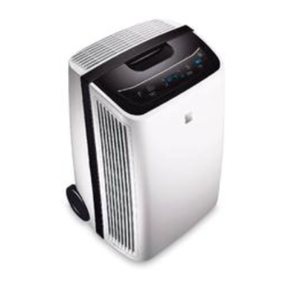
Kenmore
Kenmore 251-99701-0001 Use and care guide

Air Naturel
Air Naturel Desair user manual
